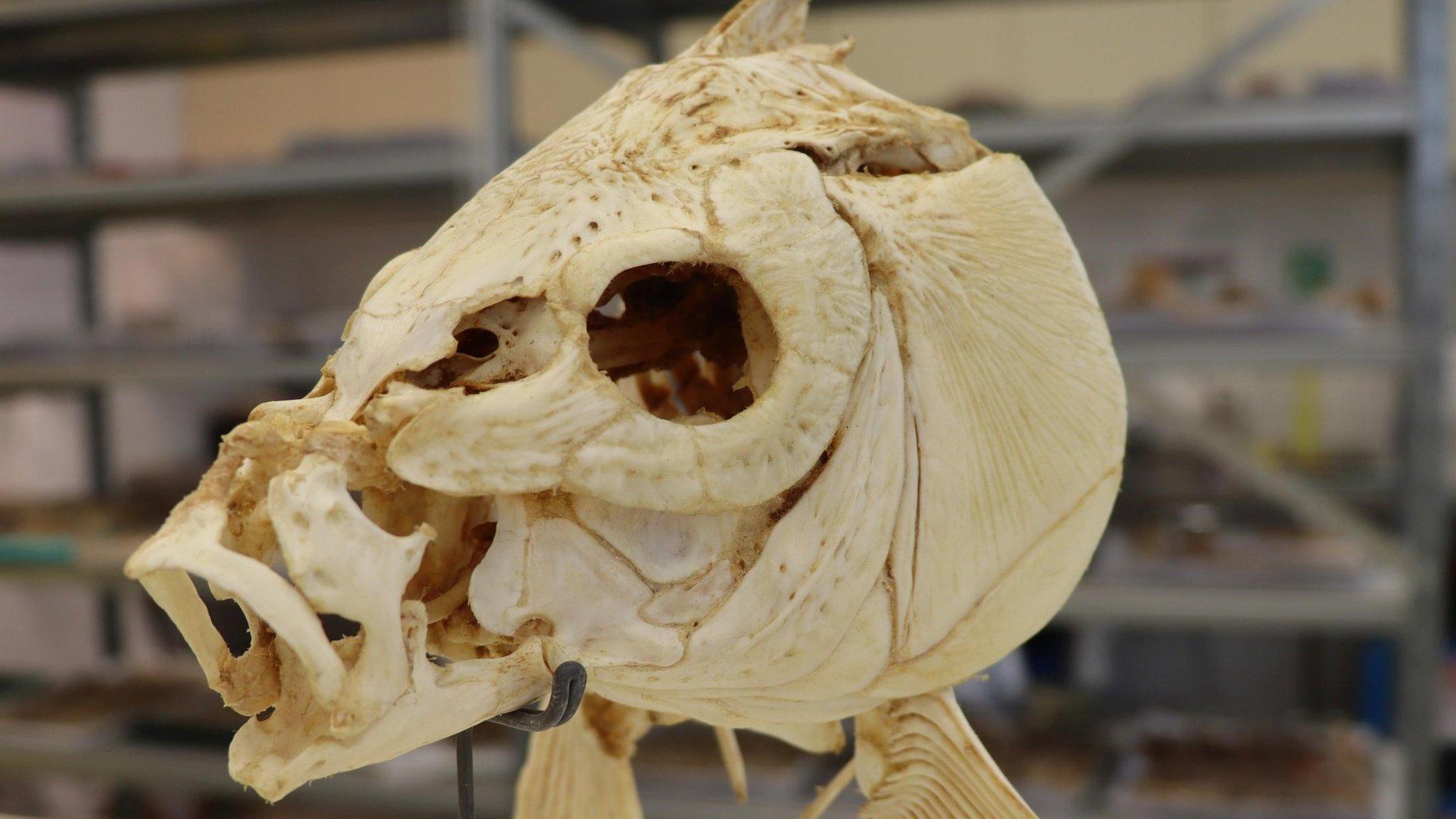Ancient fish teeth reveal earliest sign of cooking
- Published

The scientists examined remains from an extinct species of fish similar to a carp
Human beings used fire to cook food hundreds of thousands of years earlier than previously thought, an Israeli-led group of researchers has suggested.
They found evidence in the 780,000-year-old remains of a huge carp-like fish discovered in northern Israel.
The scientists noted "the transition from eating raw food to eating cooked food had dramatic implications for human development and behaviour".
The previous earliest evidence of cooking dated from about 170,000 BC.
The remains of the two-metre (6.5ft) fish were found at the Gesher Benot Yaaqob archaeological site which spans the River Jordan about 14km (8.5 miles) north of the Sea of Galilee .
Researchers led by Dr Irit Zohar of Tel Aviv University studied crystals from the enamel of the fish's teeth, which were found in large quantities at the site. The way the crystals had expanded was a sign that they had not been exposed to direct fire, but cooked at a lower temperature.
Crystals from the fish teeth showed evidence of being heated at lower temperatures than raw fire
"Gaining the skill required to cook food marks a significant evolutionary advance, as it provided an additional means for making optimal use of available food resources," said Professor Naama Goren-Inbar from the Hebrew University of Jerusalem, who directed the excavation.
"It is even possible that cooking was not limited to fish, but also included various types of animals and plants."
The scientists determined that the fish once populated the ancient Hula Lake which existed at the site until it was drained in the 1950s to try to eradicate malaria-carrying mosquitoes.
Other archaeological evidence found at the site indicates it was inhabited by groups of hunter-gatherers for tens of thousands of years.
The team believe the location of such freshwater areas offers a clue to the route followed by early man on its migration out of Africa to the Levant and further afield.
came from a joint study involving scientists from Israeli, British and German institutions.
Related topics
- Published11 May 2022
- Published25 January 2018